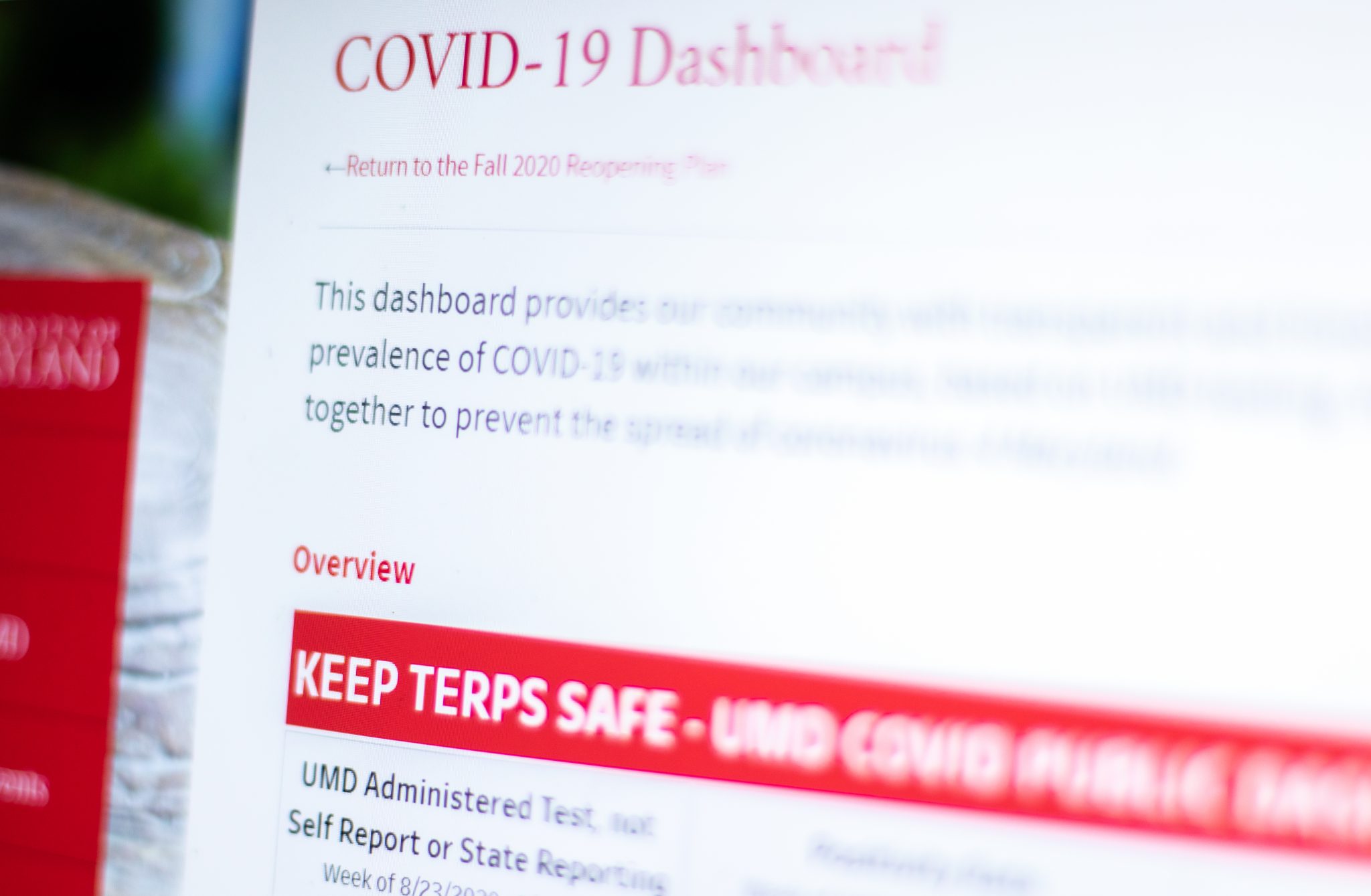The University of Maryland has continued tracking self-reported COVID-19 cases this fall, only this time, it is not publishing the metrics to a dashboard.
The university terminated its COVID-19 dashboard June 1 but has continued internally tracking self-reported cases. In the first two weeks of classes, the university identified more than 700 self-reported cases, according to data obtained by The Diamondback. Community members say they are frustrated with the lack of transparency.
“A lot of my colleagues feel like they’re not getting enough information,” said Larry Washington, a math professor and undergraduate associate chair of the math department at this university. “It’s very easy to send out a message every two or three days saying, ‘Hey, here’s the situation.’”
[Despite lifted UMD mask mandate, long COVID patients face long road to normalcy]
In an interview with The Diamondback, university President Darryll Pines said a COVID-19 dashboard would not be “meaningful to the community.”
“If there’s an uptick in our university, there’s going to be an uptick in the community,” he said, referencing regional metrics. “So the hope is that what we see on our campus is kind of consistent with what we’re seeing in the community.”
While there is no longer mass campus testing, community members can still pick up rapid tests from the health center and report positive tests online.
From Aug. 28 through Sept. 9, there were 726 self-reported COVID-19 cases, according to data obtained by The Diamondback. Of those, 639 cases were reported by students, 67 cases were reported by staff and 20 cases were reported by faculty.
Neil Sehgal, a health policy and management assistant professor at this university, said the number of self-reported COVID-19 cases is “undoubtedly” an underestimate because not everybody will report their positive test result.
Sehgal said he previously relied on the university’s COVID-19 dashboard to keep track of COVID-19 cases on the campus. He agreed with Wasington that more transparency would benefit both faculty and students.
“In previous semesters, when there were infections, I would get notes from the health center that a student in this section of your class has tested positive, and I could be mindful about that,” Sehgal said. “We don't get those anymore.”
By eliminating both the public data and mandatory masks in classrooms, Sehgal said he thinks the university has taken away people’s ability to independently assess their COVID-19 health risks.
“We don't have great data about what's happening in our backyard, and the signals that we do have are that COVID transmission is still significant,” said Sehgal, who said he often looks at the Centers for Disease Control and Prevention or the New York Times' COVID-19 trackers to stay informed about COVID-19.
More information on COVID-19 cases on the campus would give people “peace of mind,” said Michael Donkor, a junior marketing and psychology major, who said he believes the university should have continued updating the dashboard.
While Donkor said the number of student cases doesn’t worry him much, if the amount of cases continues to rise, he thinks it would be “irresponsible” of the university to leave the campus community uninformed of the cases.
But others said they understand why the university took down the COVID-19 dashboard.
Elijah Taeckens, a junior electrical engineering major, said he found the COVID-19 dashboard useful for tracking cases last year but said the numbers wouldn’t be as helpful this year since a self-reported system can be unreliable. However, there are other precautions he thinks this university should take to protect the campus community.
“I wish the university had maintained the in-class mask mandate, because I was wearing a mask in class and I still got [COVID-19], because most other people weren't,” Taeckens said.
Others, such as Jennifer Monterrosa, a freshman architecture major who said she hears about COVID-19 cases on the campus by word of mouth, said the university should set a threshold for mandatory case reporting to the campus community – if a certain number of cases are reported, the university should inform the community by default.
[UMD employees share frustration with removal of mask mandate]
Sehgal also said it would be helpful if the university were to establish metrics about when to reinstate masks or other precautions.
But without a dashboard or any other forms of communications about COVID-19 from the university to the campus community, Sehgal said this university is putting pressure on the campus community to fend for themselves without giving them the proper resources to do so effectively.
“We've increased the level of risk of getting infected on our campus. And then we've told people that they're on their own to figure out how to navigate infection if that happens to them,” Sehgal said. “We've made public health personal health.”
Assistant news editor Hannah Ziegler contributed to this report.



